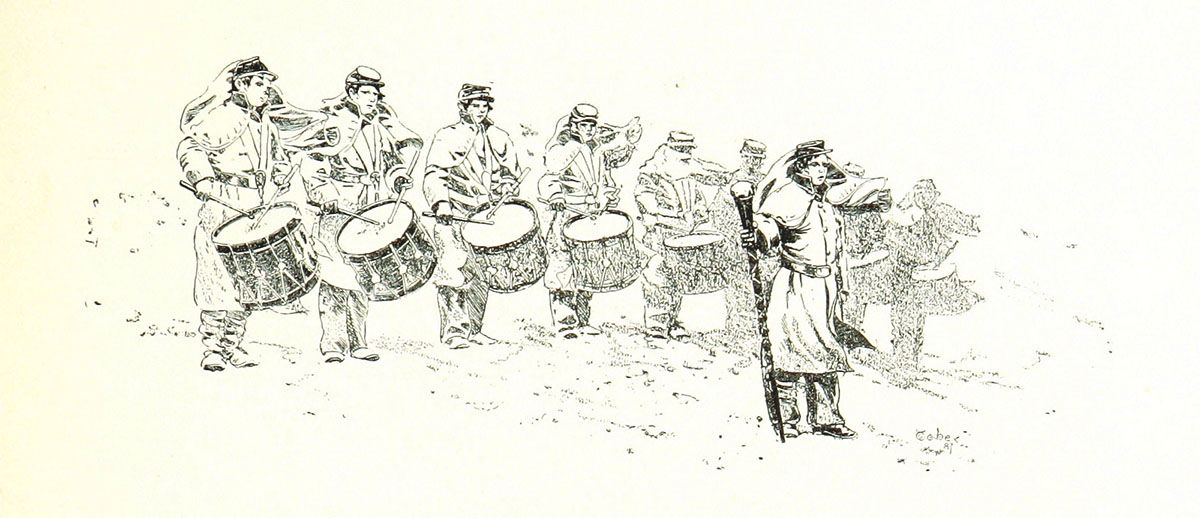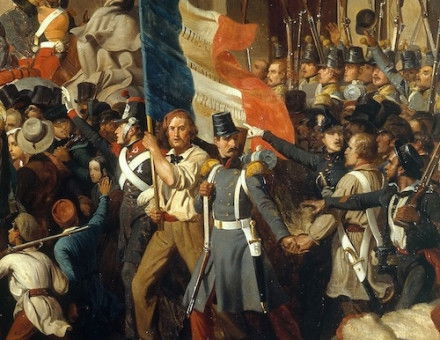
Monstrous Regiment
One of the great struggles of writing a history of gender identity is understanding people’s internal lives. How should we talk about those who dressed as men and went to war?
Whether the stories come via a 17th-century ballad, a 19th-century newspaper or a 21st-century tablet, the public has been fascinated for centuries by tales of women who put on men’s clothes, take a male name and run away to join the army – or to go to sea.
Mark Stoyle, Professor of Early Modern History at the University of Southampton, is the latest scholar to add to these entangled histories of war and gender. His forthcoming article, ‘“Give mee a Souldier’s coat”: female cross-dressing during the English Civil War’, is based on the study of hundreds of printed works and original manuscripts, and unsurprisingly drew The Guardian’s attention.
These stories of transgression have, as Stoyle writes, an ‘intrinsic human interest’ as well as a ‘peculiar elusiveness’ and have captured the imaginations of women dreaming of life outside restrictive gender norms. Feminist writers such as Julie Wheelwright, author of Amazons and Military Maids: Women Who Dressed as Men in Pursuit of Life, Liberty and Happiness, have written dozens of ‘cross-dressing soldiers’ into a history of women’s collective struggle for emancipation, which they themselves project back on to the past.
Yet does calling all these individuals who went to war in men’s attire ‘cross-dressing women’ account for all the possibilities of how they might have viewed themselves?
Historians as a profession are, rightly, reluctant to draw conclusions about the interior lives of people who left no first-hand evidence of how they regarded themselves, or to project modern ways of thinking about gender and the body on to the past. The concept of being ‘transgender’ as an identity is the historically and culturally specific consequence of 20th-century medical science and, later, community activism: it would be anachronistic to believe any of these cross-dressing troopers understood themselves as ‘transgender’ as someone might today.
And yet, as Christine Burns writes in the introduction to her recent collection Trans Britain, behaviours suggesting people were living outside the gender identities they had been ascribed at birth can be found in sources dating back to ancient history.
If gender non-conforming people have always been finding their precarious ways around the social identities they would have been expected to live in, during peacetime as well as war, the possibilities for how ‘cross-dressing’ soldiers might have lived are wider than history has usually allowed them to be.
Acknowledging that trans histories exist as a principle is different from being able to know for certain that individuals whose behaviour transgressed the extremely fixed gender structures of early modern England ‘were definitely a woman’ or ‘would be called a trans man today’. Stronger conclusions about the social identity of any ‘cross-dressed’ soldier would depend on evidence about whether they took steps to be socially recognised in an identity that was not female after wartime, or whether they immediately put men’s clothes aside on leaving military service. It does not erase historians’ knowledge about soldiers who did live as women to allow for trans possibilities in other lives.
Evidence of gender non-conforming soldiers’ postwar lives is scant enough for the 19th century, where DeAnne Blanton and Lauren Cook (authors of They Fought Like Demons: Women Soldiers in the American Civil War) found at least 250 such individuals serving on both sides of the US Civil War. The strongest example is probably the Union soldier Albert Cashier, who carried on living as male until doctors at the asylum where he died in 1915 forced him to wear women’s clothes (his ex-comrades campaigned for him to be brought back to the old soldiers’ home where he had lived before). The Edinburgh-trained army surgeon James Barry lived his whole adult life, public and private, as a man, yet his most recent biographers in 2016 still called him ‘a woman ahead of her time’.
Whether or not historians choose to represent Cashier or Barry in the same terms that they presented themselves to the world, their stories are only known today because they were put on display during or soon after their lifetimes. Trans histories’ great irony is that those who most successfully ‘passed’ in times when gender transgression was against the law, and were never ‘outed’ by physicians or in court, have taken their full selves to their graves – just as those who sought secrecy in their lifetimes would probably have wished.
Often, the available sources will not even tell historians what became of a soldier after the wars they fought in, let alone give access to their interior lives. Yet, even then, and even with historians’ proper caution against imposing modern identity labels on the past, history can accept some people have felt such deep incongruity with the gender they had been born into that they took whatever options were available within the social, medical and spiritual frameworks – the very structures historians strive to uncover – to live differently.
For an unknown but, in the popular imagination, striking number of people in 17th-century Britain, those options included putting on men’s clothes and going to war.
There are many reasons why someone brought up as a woman might have enlisted in a man’s name. Some women likely made the choice through economic necessity: their husbands had been killed, the army was in camp and they needed pay. Ballads have popularised the trope of women taking on a man’s identity to serve alongside a husband or lover – especially at sea, where a woman could not slip in alongside the female camp-followers who supplied the army’s logistics needs on land. (The ballad tradition is affectionately parodied in Terry Pratchett’s novel Monstrous Regiment, which follows ‘Polly’, in the guise of ‘Oliver’, into a company of soldiers who all turn out not to be men.)
For others, an army filling its ranks was one space where someone who sought to live in society as a man could be what they were.
Indeed, early modern armies like the royalist and parliamentarian forces, which depended on women camp-followers for much of their logistics and supply, pose the question: why would people go to such lengths to present a masculine identity while there were ways to stay close to the army while dressed as a woman?
Comparative historians of war and gender, as well as specialists in early modern Britain, will find Stoyle’s article invaluable because of the weight of historical evidence it assembles about the extent of ‘cross-dressing’ in the Civil Wars – or rather, how surprisingly little firm evidence there is to corroborate the balladeers’ (and King Charles’) belief that it was widespread.
Importantly, it also sets wartime gender transgressions in the context of a vibrant prewar cultural imagination surrounding women in masculine dress in early Stuart London. 'In January 1620’, Stoyle writes, ‘the king had famously ordered his clergy to preach “against the insolencie of our women, and theyre wearing of brode brimd hats [and] pointed dublets [with] theyre haire cut short … and some of them [carrying] stilettos or poniards”.’
But here too, – once we understand that people lived lives that we might now call trans centuries before the 20th century named them as such – do we trust the king and clergy, hardly impartial observers of the social order, to know that every person they railed against as a woman in masculine dress understood themselves that way?
Even the article itself recognises that what the evidence can prove about gender-transgressive behaviour is not the same as the extent we might infer there had been. Charles, we discover, had originally apostilled a 1643 proclamation to include a memorandum ‘that no woman presume to weare mens apparell’. The amendment, primarily directed against sex workers whom they believed were putting on men’s clothes to get closer to soldiers in camp, was left out of the final proclamation.
Stoyle speculates that it might have been dropped because so many ‘women in mens apparell’ were marching with the troops and foraging that it would have been impractical to stamp it out, or because parliamentarian propaganda would have seized on the proclamation as proof that the royalist army was defying God through endemic cross-dressing (even, perhaps, because Queen Henrietta Maria herself had dressed up as an Amazon three years before in a court masque).
If 'cross-dressed royalist women' had not been that unusual, the article even hints, would we need to interpret the parliamentarian massacre of women royalist camp-followers at Naseby in 1645 as punishment for gender transgression by some of their number, as well as for being 'Irish' (the women had spoken Welsh) and 'whores'?
All this could still be demonstrated, about the Civil Wars or others such, with space for acknowledging what we can know, and what we can not, about the people who come down to us through the sources as 'cross-dressing women'. What is more, the possibilities of gender-variant lives in the past are not just an academic matter.
Adventurous women, and lesbians drawn to traditionally masculine style and dress, have long identified with historic figures like the soldiers in the manuscripts Stoyle studied, or cultural representations like the ‘Polly Olivers’ of early modern ballads. Trans readers of history might identify with these soldiers just as strongly. Many trans men and non-binary people might recognise parallels to their own experiences in the methods ‘cross-dressed’ soldiers had to use to ‘pass’ as military men, the unexpected acceptance they would sometimes win from their closest comrades and their fears of being publicly revealed. Most historical writing, however, has not offered trans people the same space to recognise echoes of their own lives that women have been able to enjoy.
To be repeatedly, wrongly assumed to be the gender that society projects on to you – as CN Lester explains in their acclaimed Trans Like Me – is one of the most painful experiences trans people have to contend with. Popular and academic history, unwittingly or not, has played its own part in trans ‘erasure’ by foreclosing the very possibility that some of these ‘cross-dressing’ histories might reveal trans lives in the past.
The same sources that show us women who cross-dressed also offer us glimpses of how people who might have distanced themselves from womanhood over a longer period of time got by, how those who felt equally at home in more than one gender role accommodated that fluidity, and how people with intersex conditions coped with a society where their bodies did not belong. They only rarely reveal which interior reasons motivated an individual’s behaviour: but the ways a woman who wanted to cope in a masculine space managed, and the way someone who wanted to put aside a 'female' identity for good managed, often looked indistinguishable from the outside.
The proclamations and ballads and court records that give us most of our evidence for gender transgressions in the early modern military will not distinguish how any 'cross-dressed woman' in the Civil Wars lived. But historians can interpret them in ways that let trans histories be possible, even when the evidence does not let them be known.
Catherine Baker is Lecturer in Twentieth-Century History at the University of Hull and the author of Race and the Yugoslav Region (Manchester University Press, 2018). @Richmondbridge




